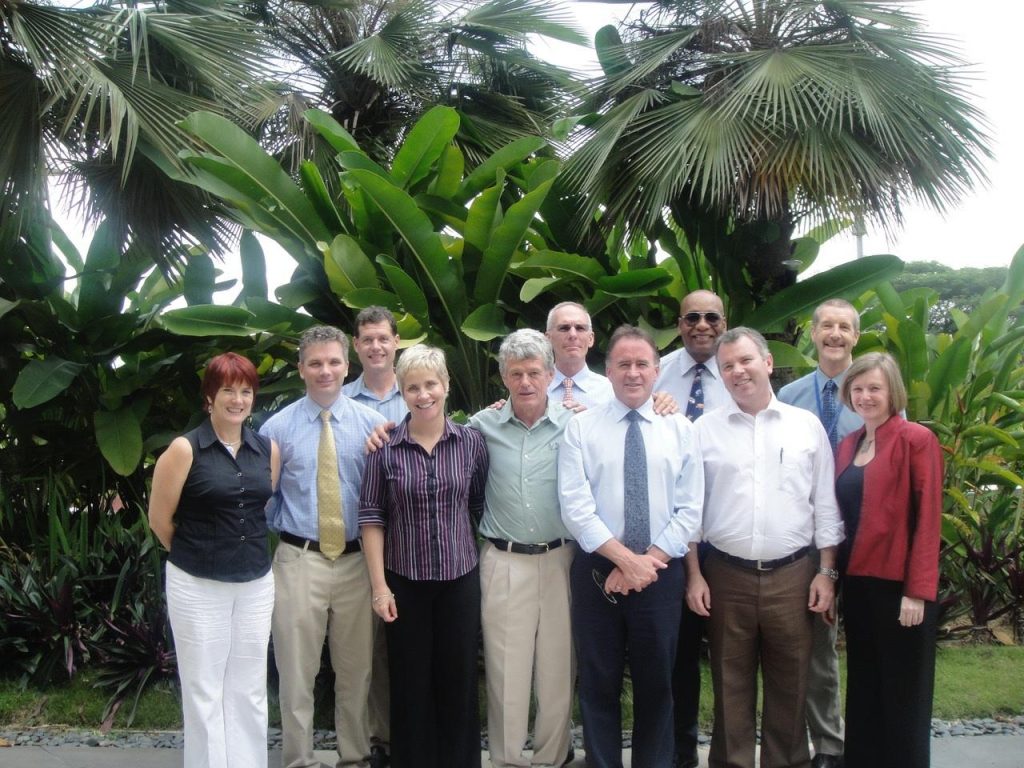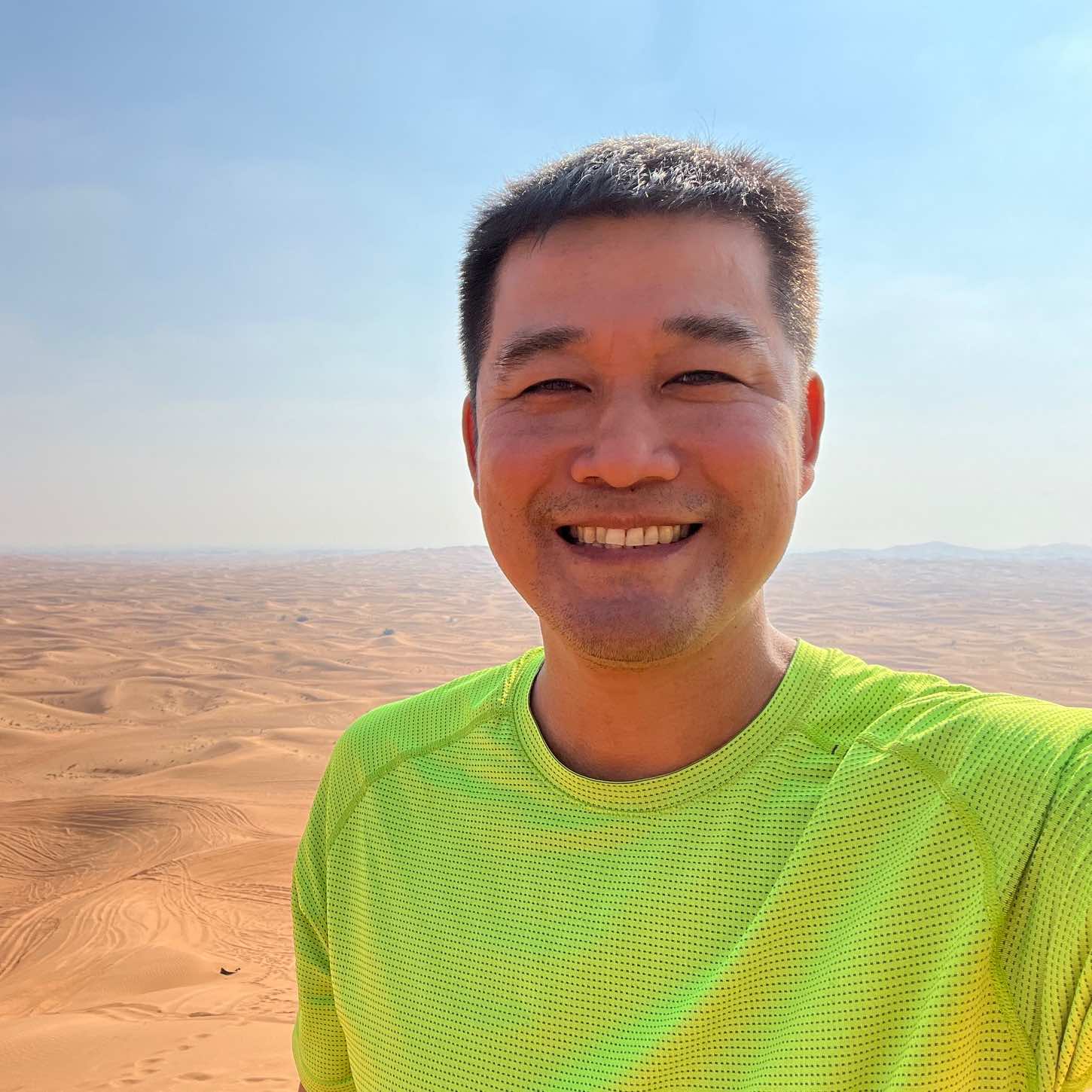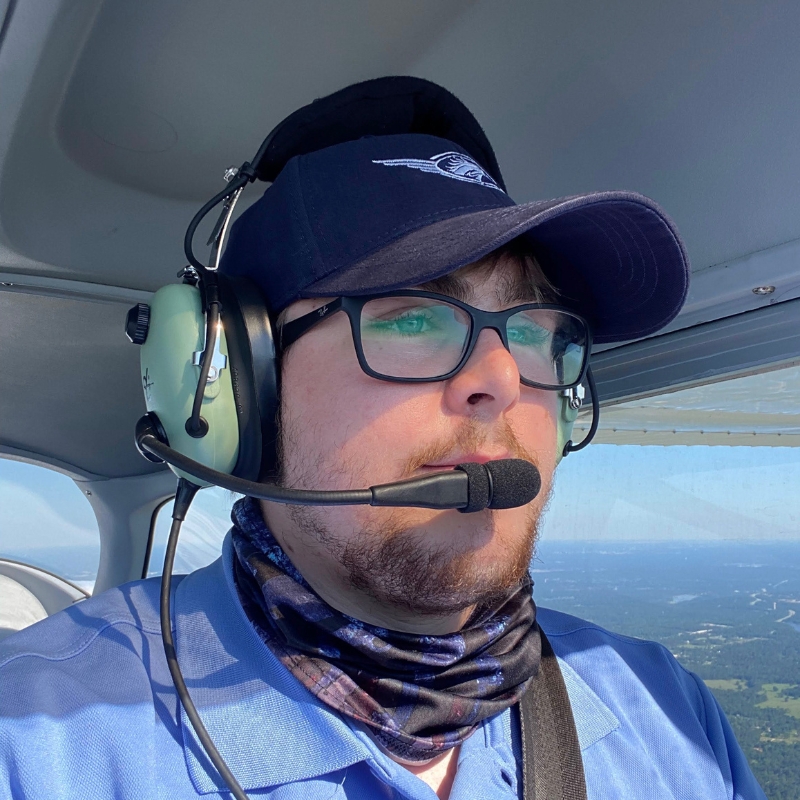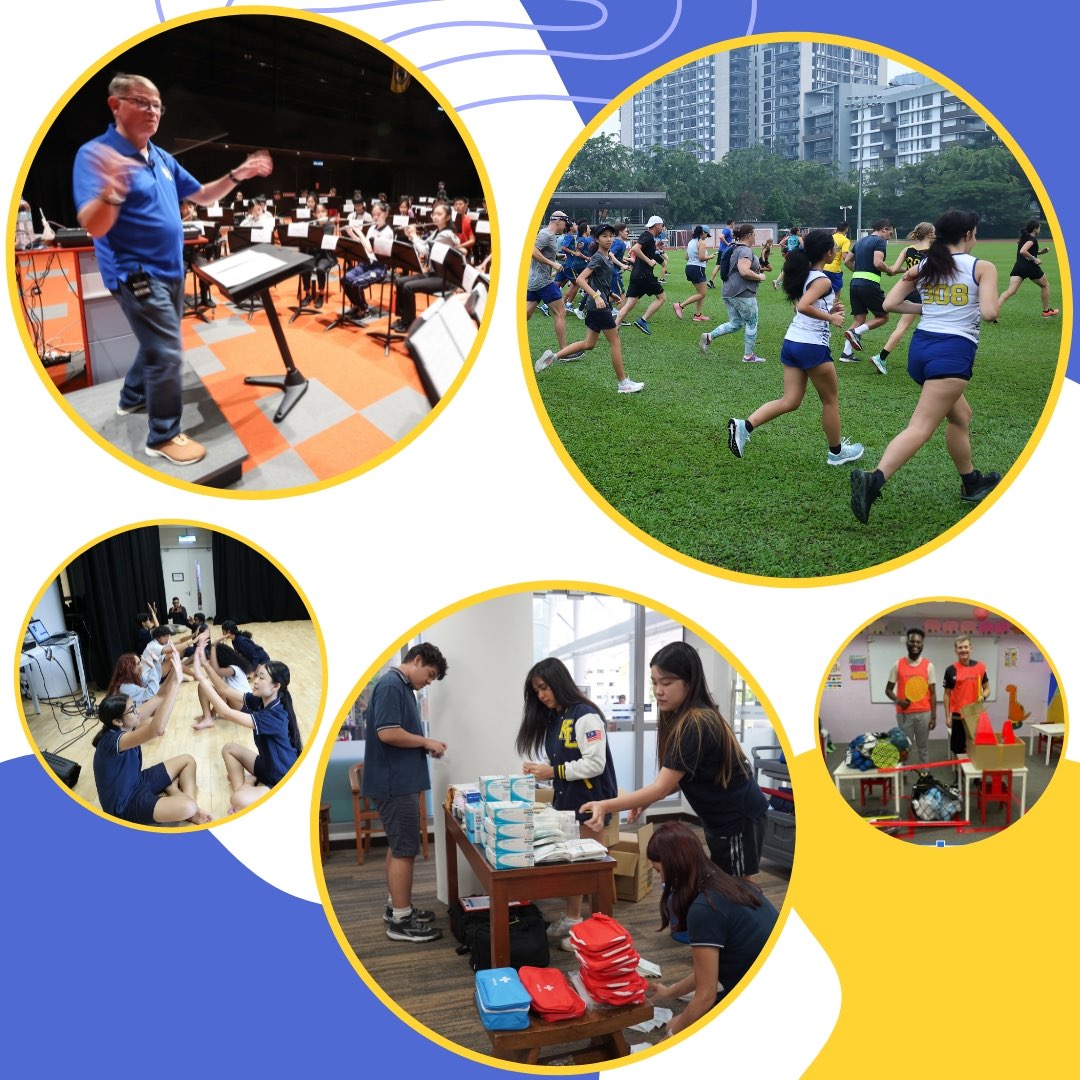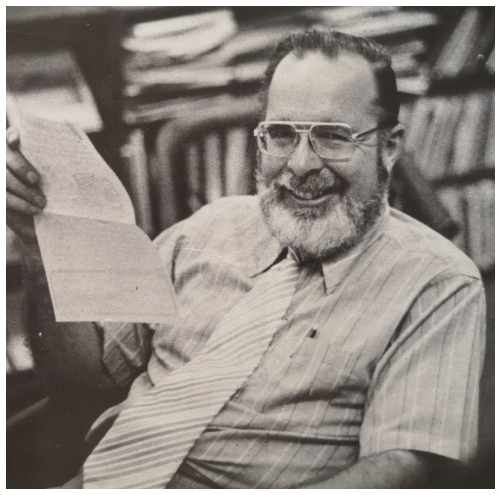Betsy & Paul Chmelik
Paul Chmelik, ISKL’s Head of School from 2006-2013 was known for walking the talk. As such, he didn’t mind doing his bit to keep the campus clean and was often seen picking up trash, role-modelling the sort of spirit he believes is important for building a strong community.
Paul came to ISKL from Singapore American School where he was high school principal, already with extensive international experience in Zambia, South Africa, and Egypt. He brought with him a desire to “recommit the school to the excellence and care that were key parts to its reputation and heritage”. Importantly, one of his key jobs as Head of School was to find and secure ISKL’s next campus.
Paul shared that journey, and the quest for ISKL’s new home with Lynette MacDonald, Director of Development and Alumni Engagement.
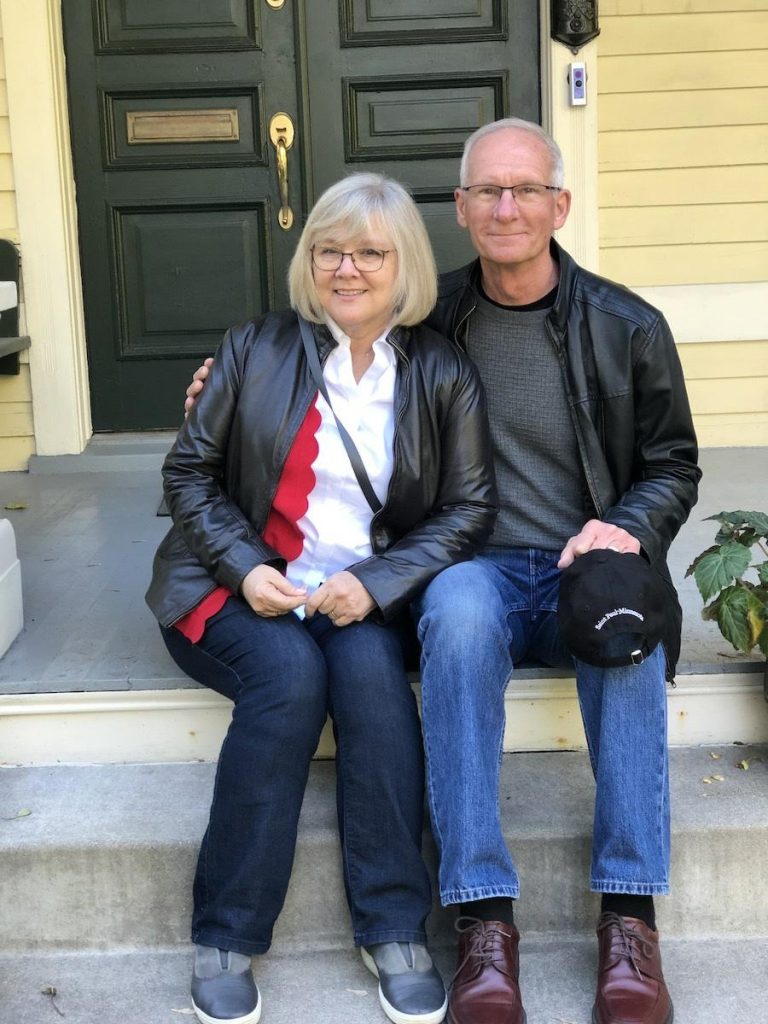
LM: When and how did your international journey start? Was it always a dream to work internationally?
PC: I participated in a Global Semester program at St. Olaf College Minnesota. Our itinerary
was around-the-world and included study in Ethiopia, India, Taiwan and Japan. I had always been interested in history and geography, but this venture really stoked my interest in the world and in teaching. While at Breck, I was involved with student trips abroad to the PRC, Kenya and Japan. In the 1980’s I participated in adult group educational trips to Brazil and Japan. Betsy was very interested in travel, too. She lived in France as an exchange student and also as a college student. Later she traveled around the world with a cousin in the early 1970’s. My first visit to Malaysia and K.L. was in 1978, traveling with my brother throughout the area. (I remember visiting the zoo and enjoying the pervasive green of the countryside.). And, yes! It was always my dream to live abroad and travel extensively. Both Betsy and I were very, very fortunate to live out that dream.
LM: Tell us about arriving at ISKL in 2006. What are your very first memories of the place and people?
PC: People were very friendly and inviting. I always felt very welcome on both campuses. Parents, faculty and staff were pleasant and approachable. ISKL people were clearly proud of their community spirit and international look and feel. And, truthfully, I was coming from SAS in Singapore, where a new high school had just been completed. The ISKL campuses at the time were pleasing but clearly a lot older. I enjoyed the ambiance of the campuses, but I also understood the desire to pursue a new campus.
LM: You set an ambitious agenda for the school. What were your top priorities and why were they important for ISKL at that stage in its development?
PC: The major priority that really fell into my lap was the search for a new campus. I remember distinctly that my first full week at the school involved a visit to a site that the Board at the time was quite keen on. (This site was way south of the present campus – much closer to Alice Smith than Melawati!) My first Board meeting involved a request for approval of moving ahead with this piece of land. This visit was the start of seven years of dozens of visits to potential new campus locations, numerous meetings in Putrajaya with government officials, frequent gatherings with landowners, sessions with architects and Board members regarding potential campus layouts, regular in-person and written communications with faculty, staff and parents – and hundreds of conversations with Rob Thompson about new campus matters. The search for a new campus was really the backdrop to all the straight-on educational work that was taking place at the school.
Beyond the new campus goal, my major goals that I trust were translated to the broader community were to increase enrollment, continue the tradition of hiring excellent faculty and staff, enhance and beautify the present campuses, strengthen a commitment to the environment and service, engage in a deep dive into the mission and vision for the school and celebrate and strengthen the diversity of academic and extracurricular opportunities offered to students. I wanted to recommit the school to the excellence and care that were key parts to its reputation and heritage. I thought I could do that via the specific aims noted above.
LM: Tell us about that search for the next campus. You mentioned dozens of site visits and meetings with stakeholders. It sounds exhausting – did you think at any stage that the search was futile?
PC: Yes – but a “modified futile” – I believed finding a new campus would eventually happen, I wasn’t certain, however, that it would happen during my time at the school. As it turned out, the present site was selected and pretty much solidified during my last year at the school. I say “pretty much” because one got to the point where every little detail had to be ensured before one could feel confident that things would move ahead. The process was a very up-and-down one. By the time I left, I felt the present site was 95% secured. I would like to point out that Board members played a huge role in the process, with Martin Rushworth, and later, Valerie Scene, being key among them. Rob Thompson was always involved, and the late John Hollenbach was critical to much of the progress that was made.
LM: Looking through the yearbooks and old publications, I notice that sustainability was a driver during your tenure. Was this something that was of particular importance to you personally and what achievements are you most proud of? Were there particular people with a similarly strong vision for sustainable practices to be adopted on campus?
PC: Yes, being good stewards of the environment and champions for sustainability were always very important to me. Doing so seemed a natural fit with being an empathetic global citizen and living in a country like Malaysia where the natural environment is so evident and essential to the country’s identity. People? Absolutely. Many people gave their keen support and encouragement to environmental thinking and endeavors. Two that stand out for me were Lawrence Myers and Angus Carmichael. When I arrived, Lawrence was already a spark for a friends-of-the-environment spirit at ISKL. The Board also earned kudos for approving the full-time position of Environmental Coordinator. Funding and supporting this position were a big statement throughout the international school community. It was tangible proof of the school’s commitment to sustainability. Later, the establishment of the position of Director of Sustainability and Service was also a concrete move to reflect our dedication to environmental stewardship.
LM: I hear you were renowned for picking up Trash on campus. Is it fair to say you were ISKL’s original Trash Hero?
PC: Yes, I think that is a fair assessment. As noted above, beautifying the campuses was a personal goal of mine, so I wanted to model that and also hopefully send the message that we all play a role in keeping our campuses attractive and well-tended looking. It wasn’t just the job of assigned staff members to do so. If the Head of School could do it, I hoped others would come to feel they could do it. Plus, it helped my back and midsection stay in shape…
LM: You mention your goal of beautifying the old campuses – why was that so important to you and what things did you give a makeover?
PC: An important part of community-building is having community members take pride in the areas that they work, study and frequent. If you want to be first class you have to look the part. That doesn’t always mean shiny and new, but it does mean being well tended. The process began with literally clearing-up eye-sores: rusty nails being removed from beams, old furniture/desks removed and replaced, carpeting upgraded, etc., etc.
From there, honestly, it would be more clear to ask, “what wasn’t done?” Almost every area of both campuses was changed/modified from 2006 to 2013. At Ampang, all the office spaces were upgraded, including admissions/communications and the counseling office. The community room was enhanced, the music and dance rooms were re-done. The garden areas were modified. The theatre got a new stage and seating. The sports field got artificial turf. Classrooms and science labs and music facilities were upgraded. Hallways were changed. New parking was created in the front. The pedestrian bridge across Japan Ampang was approved and built. The food court and cafeteria were all upgraded. The exercise/work-out area was created/improved. The outside covered court was re-done/upgraded, and…lots more.
At Melawati, it was pretty much the same deal. Classrooms were improved and the office area was up-graded. The community room on the second floor in front was created. The theater area was upgraded. The playground got new play equipment and artificial turf. The back field had drainage work done and turf work done. More parking was developed. The landscaping was upgraded, the pool was upgraded – and I know I am forgetting things.
LM: The Global Action Program (GAP) was also born during your time at ISKL. What purpose did you hope it would serve? Did you travel on any of the early GAP trips? What did you learn in those initial years?
PC: My knowledge and appreciation of such programs was born at SAS where high school students engaged in a longstanding program called Interim Semester. As the high school principal there I had overall responsibility for the program and came to highly value it. And, of course, ISKL had the stellar Karen Palko-led Malaysia Week program that was an annual highlight for middle school students. I wanted to introduce a similar program to ISKL’s high school with the understanding that such a program presents challenges to the regular program and the real world need to prepare students for examinations. Grant Millard, the high school principal at the time, became a strong advocate for such a program. Grant, and key faculty members like Julie James, really deserve much of the credit for making GAP happen. Although I didn’t travel on any of the ISKL GAP trips, or Malaysia Week, I did travel on Interim trips while at SAS including to India, Nepal and New Zealand. There is so much to be learned outside the classroom.
LM: Facebook was born in 2007 and the following 5 years saw incredible advances in technology that not only affected the way people everywhere worked, but also how we communicated and socialized. Give us a sense of how you navigated that time. Did you jump in boots and all, or was it important to appraise the value to education of each new development? Who helped you in doing that?
PC: Candidly, Facebook and social media were pretty much out of my areas of concern. I left that work and expertise to enthusiastic tech coordinators. I didn’t have much tech sense but, hopefully, good enough common sense to put such work in the hands of talented and knowledgeable people. Hilda Alposilva always ensured that the news about ISKL was out and about. For much of my time at ISKL there was more energy – rightly so, I believe – being put into getting our email system up and consistently running, along with making sure our course delivery system was functioning well. Kudos are due to many former and present tech folks including Chad Bates, Charlotte Diller and Dave Neudorf.
LM: You no longer had school-aged children by the time you started at ISKL, so couldn’t gauge student sentiment during dinner table conversations. How did you build those close connections with students?
PC: Yes, coming to ISKL as Head of School was a real change for me in terms of less direct responsibility for student interaction than in past. I also missed having a family member among the student body. My son graduated from SAS in 2004 after four years there, and as you suggest, that is a student-body connection that I missed. My efforts to connect with students centered around being a regular presence walking out-and-about the campuses, slipping into classes, and regularly attending student events. I also participated in student environmental and service endeavors and fundraising projects. I never wanted to be part of a scenario where students would say, “who’s that guy?” I hope students knew I enjoyed being around them and that I appreciated their varied talents and contributions to the school. I guess how successful I was or wasn’t in that regard could be determined by soliciting the views of students from the time I was at ISKL.
LM: ISKL’s Elementary, Middle and High Schools are now united on one campus. Was it challenging to instill the notion that we were all one school when the geography played against that? How did you stay connected to both campuses? How important was the leadership team in achieving this?
PC: The response to that initial question is “yes and no”. Many members were keen on the idea of joining the campuses for practical and ideological reasons. If you had children at both campuses, certainly having kids at one campus would be easier logistically. The idea of one campus also fits well with facilitating a spirit of community. On the other hand, some elementary parents still preferred that their elementary children not be “around the big kids”. Personally, I had worked in PK-12 onecampus schools for almost thirty years so I was absolutely sold on the one-campus concept. I had seen the huge benefits of students being on one campus and “big kids and little kids” being around each other.
In terms of keeping connected with Melawati and Ampang, it wasn’t always easy. Although my main office was at Ampang, I always scheduled times at Melawati each week and had an office set up for me at Melawati. I walked the campus at least a
couple of times each week. Our Admin Council group alternated our weekly meetings between Ampang and Melawati, and the admin group was great about attending student activities on both campuses. I think it is fair to say that there was a lot of pride in both campuses in terms of people and facilities, and the admin team led the way with this. Also, many of our admin leadership group had or did have children at both campuses. That helped, too.
LM: After ISKL, you moved on to the American Embassy School in New Delhi where you were Director. What learning from your time at ISKL did you take with you to India?
PC: I like to think that I brought to AES what I had learned at ISKL and all the previous schools that I worked at throughout my career. Those lessons are remarkably similar: it is important to notice what people do and to thank them for their efforts; faculty and staff play key roles in any school – value them both; good schools stand for and support excellence – great schools meld the drive for excellence with genuine care for students and families; international schools present unique and wonderful opportunities to value diversity and globally empathetic students; be mindful of the essential and unique contributions of “local” faculty and staff; treat people with respect – listen to them – even in tough situations.
LM: You’ve retired back to the States at a time when the whole world is facing unprecedented challenges. How did it feel to return and have you been able to fulfill any of your retirement plans? What are your hopes for the US now?
PC: On the one hand, I love the opportunity to read as much as I want, to be closer to old friends and family and to continue a travel regime without my head being in work matters. We also live in a great neighborhood now with coffee shops and bar/restaurants within easy walking distance.
On the other hand, it has been a challenge to return to the United States at this time. It is a particularly divisive time in
American history, with the added challenges and disillusionment presented by the death of George Floyd here in Minnesota. And, of course, life has changed dramatically since the onset of COVID-19: no more travel, no more seeing family and friends in person, etc., etc. My retirement is clearly divided into pre-COVID and post-COVID eras. So, fulfilled retirement plans? Yes, prior to COVID, and no, during COVID. I am still trying to figure how best to be an engaged and knowledgeable citizen.
Without trying to be overly dramatic, I hope the U.S. of the future takes on some of its demons, with systemic racism being at the top of the list. I also hope that the U.S. becomes a truly compassionate and globally minded leader-nation…again. We cannot be an isolationist country. We must be a global-minded nation, valuing our traditions and culture – as well as those of other countries.
LM: Do you have any memorable moments or incidents to share from your time at ISKL – any disasters averted, great achievements recognized etc.?
PC: I am not very good at stories, but I guess one that some of the veteran faculty and staff may remember is that for a year or two I initiated a situation where if I approached a person and they could accurately recite the mission or the vision or the SLRs, I would give them 10 Ringgit on the spot. It was really kind of fun – and, yes, silly – but it did have a serious side in that I really wanted people to appreciate the importance of the mission and our other guiding principles.
I also certainly remember some of the high school athletic championships/performances, particularly in soccer and rugby and touch-rugby. The IASAS conference is tough, and when the kids played well everyone felt very happy and excited for them. The achievements in the performing arts, too, including dance, theater, music and speech/forensics were also highlights. It was always a delight to see the talents of the students.
LM: What do you miss about ISKL, KL and Malaysia? You returned for the 50th anniversary, and now we are 55 Years Young and on a new campus! What is your anniversary message to ISKL?
PC: I miss being around young people – watching them and seeing them interact with others and displaying their talents. I miss the sense of community that ISKL offered. I miss the warm weather and the deep greens of the city and country – and, of course, I miss the food. I have days when I dearly miss walking or driving over to a hawker stall. My message remains the same as before: value and build community and stand for excellence and care.
I hope that parents, students and faculty and staff truly value the education offered them at ISKL. In general, international schools provide incredible learning opportunities. Amidst them, ISKL can claim a rich tradition of valuing students and reveling in their development as thoughtful global people. International school community members must continue to work hard at instilling in students a deep desire to be “highly successful, spirited, socially responsible global citizens.” We must ensure that this is not just a pat statement but a deeply held commitment.
In addition, I send my affection, respect and thanks to those faculty, staff, students and families who composed the ISKL community during my time at ISKL. I was particularly fortunate to benefit from a strong group of administrators, including outstanding principals and tech and curriculum leaders with whom I enjoyed collaborating. Regarding the future, all best wishes to Rami and his team of educators as they respond to the huge challenges that the modern world presents to students and their families.
